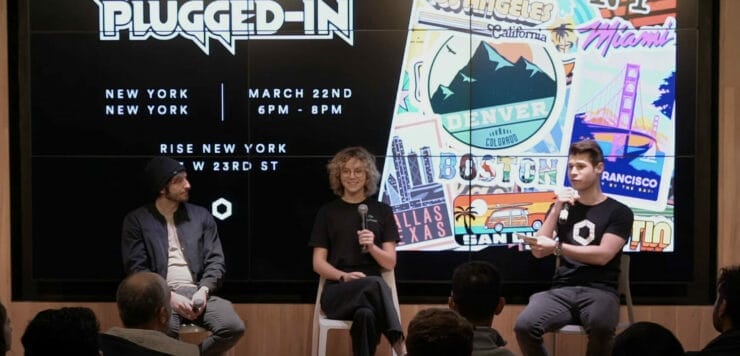At a recent Chainlink Plugged-In event, Chainlink Labs’ Jamie Weintraub hosted a panel exploring web3 use cases poised to improve the day-to-day lives of people around the world. Representatives from two layer-1 networks in the Chainlink ecosystem – Claire Biasco, from IoTeX and Brady Gentile from Hedera Hashgraph – joined to share their unique perspectives and highlight the specific use cases they’re most excited about.
Financial Transactions
Blockchain systems allow people to pay each other without financial or border limits. “The technology is there to be able to do these things fast and inexpensively,” Gentile said.
Biasco emphasized the importance of frictionless, borderless transactions, especially for the unbanked in developing nations and people in need of humanitarian aid. Speaking of IoTex’s recent partnership with Unchain Fund to provide direct relief to civilians in Ukraine, she said cryptocurrency has the unique capacity to provide fast relief without centralized payment platforms extracting fees.
Decentralized Identity
Biasco explained why IoTeX‘s internet of things (IoT) blockchain is focused on fraud mitigation by giving people and machines decentralized identifiers (DIDs) on-chain.
“When you’re talking about machines that are eventually going to be able to perform transactions and perform actions autonomously, we need to prove that these are being done verifiably, that they’re tamper-proof and secure,” she said.
Gentile echoed the importance of creating industry-wide standards for ensuring identity across platforms, with the additional convenience of “not having to upload an ID or a bank statement or a utility bill” to prove you are who you say you are.
Insurance
Connecting IoT data to the blockchain enables a vast array of consumer-friendly use cases within the insurance industry. IoT devices that track a car’s speed could save safe drivers money on car insurance. “If you have a smart lock on your home and you prove that you’re locking your home every day, that could lower your home insurance costs,” Biasco added.
IoT and wearable devices can track and verify exercise data, enabling preventative healthcare measures, easing the burden on healthcare systems, and lowering health insurance costs. Gentile highlighted NFTs as a means to track health records in a user-friendly way that abstracts away much of the underlying technology’s complexity.
Data Autonomy
Both panelists agreed that the goal of web3, and what makes the aforementioned use cases so exciting, is that individuals would own and control their own data, and could both utilize and monetize their data without having to submit it to a third party.
“Right now, the reality in IoT is that those third parties do have all of your information and they have it in a very insecure way,” Biasco explained, noting that web2 companies may not be incentivized to provide higher security standards. But with the IoT industry forecasted to reach up to $12 trillion by 2030, data autonomy is increasingly vital.
“Your fridge is now connected to the internet, your coffeemaker, everything in your home before you even step foot outside is starting to connect to the internet,” she said. “The reality is there needs to be a solution and the question is finding a feasible one.”
Biasco and Gentile agreed that the solution will stem from building secure, reliable, open-source web3 infrastructure that opens the floor up to developers. Cross-chain communication, which Chainlink aims to enable with its Cross-Chain Interoperability Protocol (CCIP) later this year, is imperative.
“The answer can’t be done by one team or one company alone,” Biasco said. “It really is about inviting the broader web3 space, and seeing how blockchains can interact together, and how cross-chain compatibility comes into play – and making sure that all of this data can be communicated across chains and not only kept as a walled garden within one chain. It’s about opening this design space and not closing it off.”
Watch the entire panel discussion.


